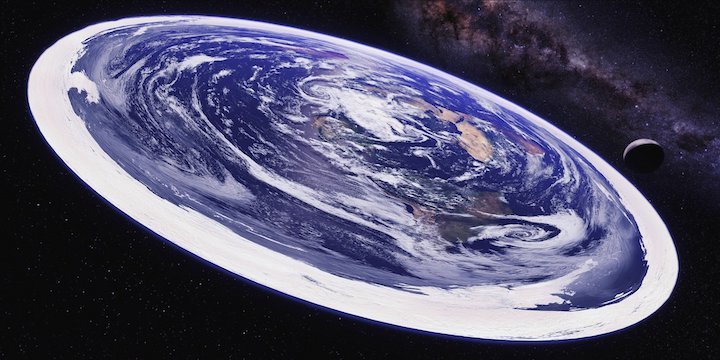9.04.2018

Only 66 percent of 18- to 24-year-olds in the U.S. are confident that the world is round, according to a new national survey.
The findings don't necessarily indicate an epidemic of flat-Earthism, as only 4 percent of the 18- to 24-year-old age group said they actually believe the world is flat. Rather, there seem to be a relatively large number in this age group who are willing to entertain doubts: 9 percent said they had always believed the world was round but were recently having doubts, 5 percent said they had always believed the world was flat but were becoming skeptical of that conclusion and 16 percent just weren't sure.
Flat-Earth philosophy has been around since the 19th century, but it has recently blown up online, particularly on YouTube and Twitter. Believers post videos and memes arguing their case for a flat Earth and positing conspiracy theories to explain away everything that makes it clear that the planet is, in fact, a globe.
It's hard to pin down precisely how many flat-Earthers there are. The first flat-Earth conference in the United States, held last year, drew a crowd of 500, according to its organizers. The new survey, conducted by YouGov, drew respondents from its online panel of 1.8 million residents of the United States. The survey questioned 8,215 adults, and the results were then weighted to represent the demographic makeup of the U.S. population. [7 Ways to Prove the Earth Is Round (Without Launching a Satellite)]
Overall, the results suggest that 84 percent of Americans believe the world is round. Five percent said they always believed the world to be round but have recently become skeptical. Two percent said the world is flat. Another 2 percent said they always thought the world was flat but have recently become skeptical. And 7 percent just weren't sure.
"Young millennials," or those ages 18 to 24, were the most likely to exhibit round-Earth skepticism, with only 66 percent firm in their belief in a spherical world. For comparison, 94 percent of those 55 and older think the world is round, as do 85 percent of 45- to 54-year-olds, 82 percent of 35- to 44-year-olds and 76 percent of 25- to 34-year-olds.
There weren't many differences in flat-Earth beliefs across regions of the country or between genders or people of different political persuasions. People who reported incomes of less than $40,000 a year were slightly less likely to say the world was round than people who made higher incomes (79 percent versus 87 percent in the $40,000 to $80,000 income bracket, and 92 percent in the $80,000 and up income bracket).
The geography of religion
The most predictive demographic factor that explains flat-Earth belief appears to be religion, the YouGov survey suggested. According to the results, 52 percent of those who said the world was flat also called themselves "very religious," a descriptor that only 20 percent of Americans as a whole use for themselves. Another 23 percent of flat-Earth believers called themselves "somewhat religious," while 25 percent said they were either not very religious or not religious at all.
While few polls have focused specifically on flat-Earth beliefs, other national polls have suggested that Americans are shaky on facts generally taught by the time they reach fourth grade. A 1999 Gallup poll found that 18 percent of Americans mistakenly thought the sun revolves around the Earth, rather than the other way around. (Germans and Britons were similarly heliocentrically confused in surveys taken around the same time, according to Gallup.)
Google Trends suggests that interest in the concept of "flat Earth," if not necessarily belief, has been on the rise over the past few years. The search trend for the term in the United States crept upward over 2016 and 2017, with spikes coinciding with particular events. For example, searches for "flat Earth" rose around the time of the August 2017 solar eclipse, which spurred much sparring between flat-Earthers and mainstreamers online.
Quelle: SC
